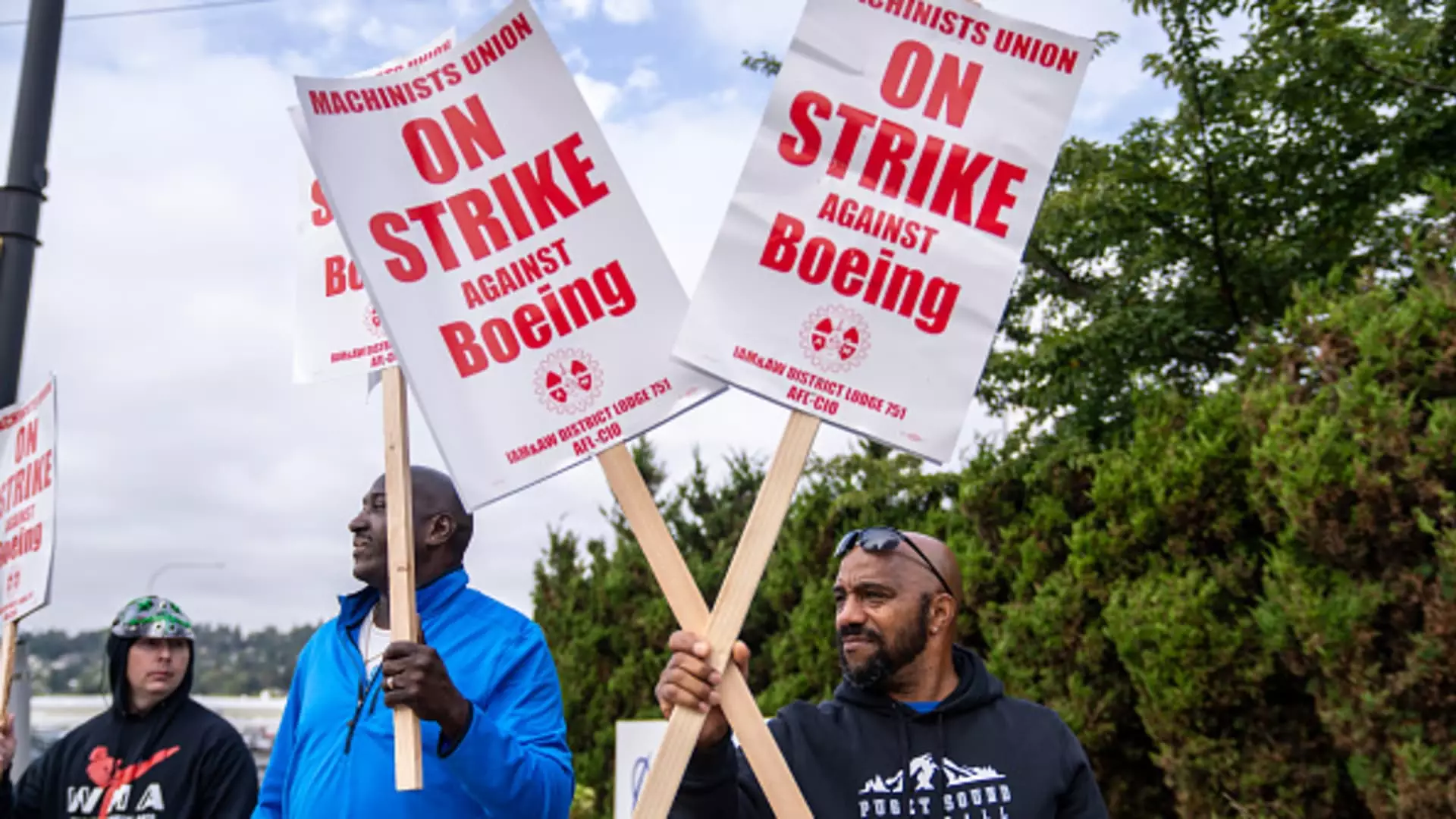The Boeing Strike: Turmoil at the Aerospace Giant

The recent turmoil at Boeing showcases a company grappling with an array of challenges that extend beyond the factory floor. With over 30,000 machinists on strike for more than a month, the stakes couldn’t be higher. The strike is not only a technical disruption; it is a testament to the broader issues plaguing the aerospace manufacturer, as it continues to navigate a turbulent landscape marked by financial difficulties, a lack of effective management, and deteriorating labor relations.
The catalyst for the strike was the rejection of a tentative contract by the machinists’ union, an overwhelming vote against what was expected to be a constructive agreement. This discontent among workers highlights deeper grievances that go well beyond wages and benefits. The union’s demands for better working conditions and job security resonate with the broader frustrations many blue-collar workers face today. Boeing’s ongoing production challenges, exacerbated by the strike, have led to a monumental financial impact, with estimates suggesting the company is losing over $1 billion monthly. This financial bleeding underscores the gravity of the situation not only for employees but also for the company’s investors and stakeholders who are watching with concern.
Boeing’s situation is precarious. Executives, including new CEO Kelly Ortberg, are facing immense pressure to stabilize the company. The recent revelation of potential job cuts amounting to 10% of the workforce sends ripple effects through not only Boeing’s internal operations but also its external partnerships, notably with suppliers who are already feeling the pinch. The cold reality is that Boeing has not turned a profit since 2018, and the delays in delivering aircraft like the 777X only add to investor anxiety. Ortberg’s upcoming earnings call will be critical; investors will be looking for signs of recovery rather than continued mismanagement.
The leadership at Boeing has been under scrutiny, particularly as Ortberg is thrust into a high-stakes environment with what seems like an incessant spiral of crises. The perception of mismanagement is compounded by Boeing’s recent decisions, including pulling back on an earlier contract offer, which could alienate workers further. The breakdown of federally mediated talks indicates that communication between the company and its workers is strained; a reconciliatory approach may be necessary to mend relationships that have reached a breaking point.
Labor analysts suggest that the union’s insistence on reinstituting pension plans, although unlikely, points to a strong desire for long-term stability — something that employees feel has been eroded. This negotiation process has highlighted the fraught dynamics at play, revealing that the company’s path to healing will be laden with obstacles unless management commits to a fundamental shift in how it engages with its workforce.
Boeing’s apparent willingness to engage in layoffs and cut production could be perceived as strategic missteps, as the company risks losing the very skilled labor force that could stabilize production in the long run. Hiring and training skilled machinists is no small feat, especially after prior layoffs during the pandemic; such reversals could create a precarious environment where operational stability is ever elusive.
Furthermore, financial analysts are expressing concern that potential downgrades to junk status may be on the horizon for Boeing. The company is perceived to be caught in a vicious cycle of quality control, labor unrest, and inadequate cash flow, which are further compounded by the inability to meet production targets. The delayed delivery of crucial aircraft models contributes to Boeing’s escalating woes and raises questions about future contracts and commitments.
As the strike continues to unfold, the ramifications for Boeing’s future are profound. The atmosphere of uncertainty surrounding the company not only affects workers but also has implications for its supply chain and investors. Subsidiaries and partner companies such as Spirit AeroSystems are beginning to reevaluate their workforce needs amid Boeing’s financial challenges, fearing that any further instability could hinder their operations as well.
It is crucial for Boeing to face these challenges with transparency and accountability. This encompasses not only improving relations with its workers but also considering its strategic direction. By investing in the workforce and renewing efforts to ensure stability in production, Boeing can work toward a resolution that benefits all parties involved.
The Boeing strike represents more than just a labor dispute; it symbolizes the strategic and operational challenges that the aerospace giant must confront in order to emerge from its ongoing crisis. The road ahead is challenging, but addressing the underlying concerns could pave the way for recovery and revitalization in this iconic American company.





